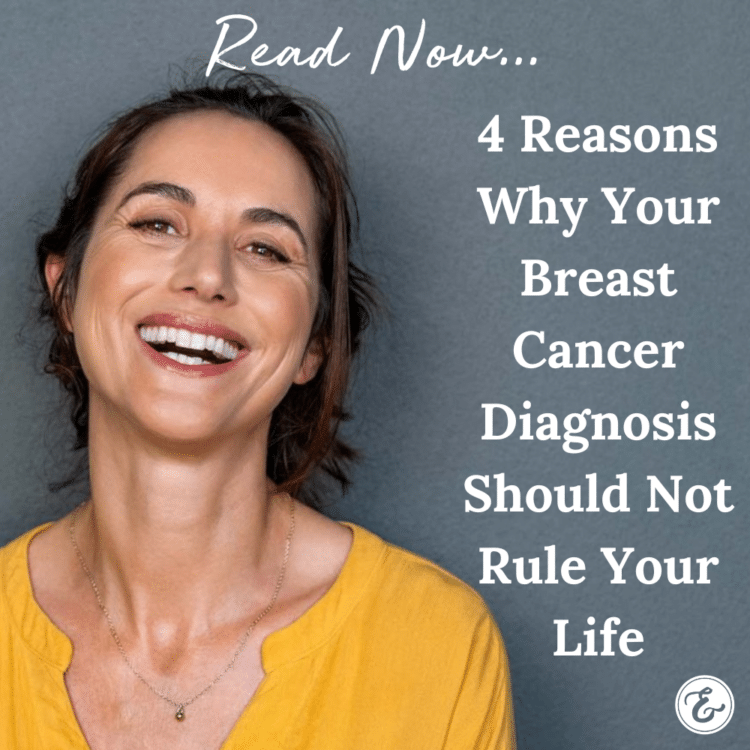5 Ways to Reduce Your Risk of Breast Cancer

October is Breast Cancer Awareness Month. It is an annual campaign designed to increase breast cancer awareness worldwide, promoting research, risk assessment, screening and early detection, and treatment options. According to Breastcancer.org, more than 287,000 women in the United States alone are estimated to be diagnosed with invasive breast cancer in 2022. Nearly 43,000 of them may die from the disease.
If you are concerned about breast cancer, there are steps you can take to lower your risk. While we can’t do anything about risk factors such as family history and age, some lifestyle changes have been shown to reduce breast cancer risk, even in high risk women. Five of them are provided below.
Important to remember is that these steps are in addition to your regular breast screening and monthly breast self-exam (BSE). Both of these are crucial for early detection of breast cancer which increases your chance of survival. Your doctor can recommend a breast screening interval suited for your age and overall breast cancer risks. You can learn how to do your monthly BSE by clicking here.
Studies have shown that these 5 things can decrease your risk of breast cancer:
1. Exercise
Research has shown that exercise can reduce your breast cancer risk. According to The American Cancer Society, 150 minutes of moderate-intensity activity or 75 minutes of vigorous activity each week, or a combination of both, can lower your cancer risk overall. Moderate-intensity exercise includes physical activity such as walking, gardening, swimming, or mowing the lawn. Just 1.25-2.5 hours per week of brisk walking has been shown by the Women’s Health Initiative (WHI) to reduce your breast cancer risk by 18%.
Vigorous-intensity activity can include running, aerobic dancing, spinning, or other activities that increase your heart rate and make you sweat. One 2012 study found that women who exercised 10+ hours weekly had a 30% lower risk in comparison to sedentary women. The Susan G. Komen Foundation website indicates that exercise may also lower estrogen hormone levels. Estrogen is a contributor to some breast cancers. Exercise also strengthens your immune system which can help destroy or slow the growth of cancer cells.
2. Maintain a Healthy Weight
Being overweight or obese increases your breast cancer risk. This is especially true of postmenopausal women. Managing weight seems to be a challenge for most people in the U.S., even though it is one of the most important disease prevention factors overall. According to the CDC (Centers for Disease Control and Prevention), approximately 42% of American adults are overweight.
For women, having more fat tissue can increase the chance of getting breast cancer by raising estrogen levels. As stated earlier, the female hormone estrogen has been shown to aid breast cancer growth. After menopause, most estrogen comes from fat tissue—the more fat tissue, the more estrogen. In addition, women who are overweight tend to have higher levels of another hormone, insulin. Some cancers, including breast cancer, have been linked to higher insulin levels.
If you happen to be a younger woman this may not seem to include you, but making this a lifestyle choice now could make it much easier as you age and your metabolism slows down.
3. Limit Alcohol
As few as one drink per day can increase your breast cancer risk. Research has shown that drinking alcoholic beverages, including beer, wine, and liquor, increases a woman’s risk of hormone-receptor-positive breast cancer. Alcohol can increase levels of estrogen and other hormones associated with this type of breast cancer. Alcohol may also contribute to breast cancer risk by damaging cellular DNA.
According to Breastcancer.org, in a comparison of women who don’t drink at all with those who have three alcoholic drinks per week, there is a 15% higher risk of breast cancer. Furthermore, the research indicates that the risk of breast cancer increases by 10% for each additional drink women consume daily.
4. Stop Smoking
Smoking has been linked to a higher risk of breast cancer in younger, premenopausal women. A study published in Breast Cancer Research found that women who’ve ever smoked at all were 14% more likely to develop breast cancer than those who had never smoked. Research also shows that the risk is higher among women who began smoking young, either before they began menstruating or before their first child birth. For women who are former smokers, there is still a 7% increased risk.
U.S. scientists who tracked approximately 186,000 women between the ages of 50-71 found that those who smoked were 19% more likely to develop breast cancer than the never smokers. Research also indicates that there may be a connection between exposure to heavy second-hand smoke and breast cancer risk in postmenopausal women. In addition, according to the American Cancer Society, smoking can shorten breast cancer survival.
5. Maintain a Healthy Diet
Women who eat more red meat may have a higher risk of breast cancer later in life. Saturated fat, primarily found in foods that come from animals, has been linked to breast cancer risk.
According to Breastcancer.org, a European study suggests that a diet high in fat, particularly saturated fat, is linked to a greater risk of hormone-receptor-positive breast cancer. Limiting red meat, including beef, pork, lamb, and goat, and opting instead for fish, poultry, or beans can lower that risk. Limiting processed meats can also lower your risk.
The International Agency for Research on Cancer (IARC) has classified processed meat as a carcinogen, something that causes cancer. It refers to meat that has been treated in some way to preserve or flavor it. Processed meat includes hot dogs, ham, bacon, sausage, and some deli meats. Processes include salting, curing, fermenting, and smoking.
Eating more fruits and vegetables (about 10 servings per day) will help lower your risk. Experts suggest maintaining a diet similar to the Mediterranean style diet, which includes vegetables, healthy fats, fish, and whole grains. Healthy fats include olive oil, nuts, and avocado.
Factors You Can and Can’t Control
The above steps are only a few you can take to lower your breast cancer risk. Other risk factors and what you can do about them are listed on The Susan G. Komen Foundation website, Breastcancer.org, and many others.
Some factors, such as breastfeeding and the use of Hormone Replacement Therapy (HRT) are within your control. Others, such as age at first period, age at menopause, inherited gene mutations, and ethnicity, which cannot be changed are important in assessing risks and screening requirements. Talk to your doctor about accessing your breast cancer risks and developing a plan of action.
—
October is Breast Cancer Awareness month, but truly, we should be monitoring our health year-round. Listen to this podcast episode for more health advice: How to Get Your Hormones in Check with Ashby Duval – 070

